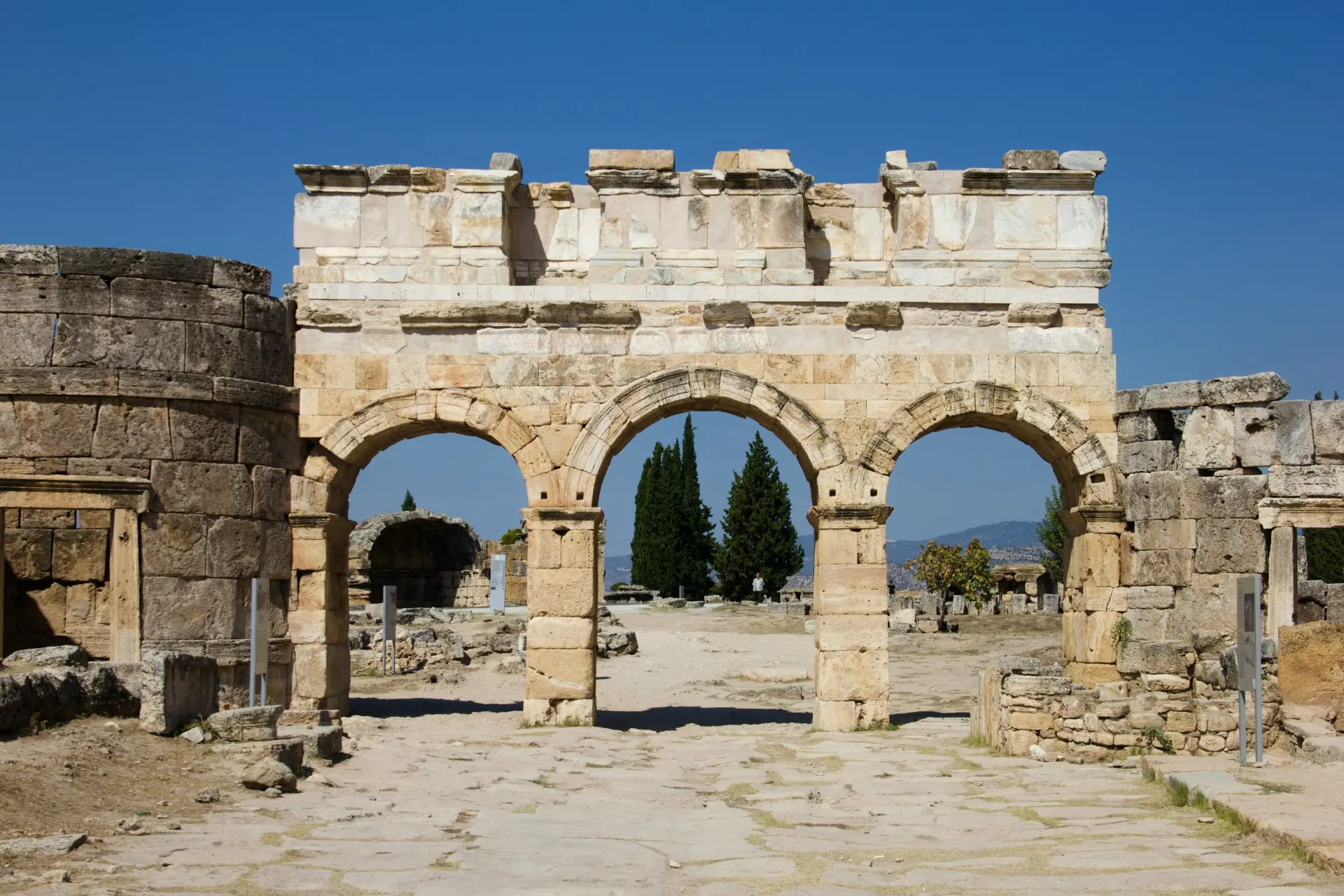Let’s be honest—if you’ve spent any time digging into the history of ancient civilizations, you’ve probably run into some big questions. How old are these ruins, really? Where does the Bible fit in? And what do we do when archaeology and Scripture seem to tell different stories?
For many Bible-believing Christians, this creates a personal tension. We believe God’s Word is without error. We know the global Flood happened—Genesis makes that clear. And yet, archaeologists will tell us that civilizations like Sumer existed thousands of years before the Flood supposedly took place. Even more puzzling, they’ve found ancient tablets from Mesopotamia that tell flood stories very similar to the one in Genesis—and they say those were written centuries before Moses.
So what’s going on? Can we trust the Bible and still take archaeology seriously? That’s the heart of the issue we’re exploring here. And the goal isn’t just to win an argument—it’s to strengthen your confidence in the truth and reliability of God’s Word.
The Biblical Record
When we open Genesis, we’re not just reading spiritual reflections—we’re reading history. Real names, real events, real dates. The genealogies in Genesis 5 and 11 aren’t filler material. They give us a timeline, showing the years from Adam to Noah, from Noah to Abraham.
If we take the text at face value, we’re looking at a global Flood that happened somewhere around 2500 to 2300 BC. After the Flood, humanity spread out from Babel, just as Genesis 10 and 11 describe. This is the foundation for all human civilization as we know it.
Jesus treated these events as historical—so did Peter and Paul. We can’t dismiss them without cutting the legs out from under our faith. As Paul wrote, “We take every thought captive to obey Christ” (2 Corinthians 10:5), which includes how we think about history and evidence. If the Bible is true (and it is), then its timeline must be trustworthy.
Ancient Civilizations and Early Tablets
Now, here’s where the conflict shows up. Mainstream archaeology tells us that cities like Eridu and Uruk in southern Mesopotamia date back as far as 4000 BC—long before the Flood as Scripture presents it. They say the famous Epic of Gilgamesh, which includes a flood account, was written long before Moses was born.
To secular scholars, the Bible looks like a late imitation or reworking of older myths. And if you accept their timeline, that conclusion makes sense.
But this is exactly why the starting point matters so much. If you begin with Scripture as your foundation, you’ll interpret the data in a way that aligns with God’s revealed truth. If you start with naturalism and long-age assumptions, you’ll naturally arrive at very different conclusions. It really comes down to your worldview. Science, in and of itself, doesn’t say anything—scientists do. And every scientist approaches the evidence with certain assumptions already in place. Artifacts, texts, and layers in the ground don’t interpret themselves. People interpret them, and those interpretations are always shaped—often deeply—by the lens through which the world is viewed. That’s why it’s vital to remember, as Numbers 23:19 says, that “God is not a man, that he should lie.” His Word stands even when human interpretation wavers.
How The Past is Dated and Why It Matters
So how do archaeologists come up with dates for their finds? There are two main tools they use: relative dating and radiometric dating.
Relative dating is kind of like digging through the layers of a cake. The idea is that the bottom layers are older, and the top layers are more recent. And that can be true—if the “cake” hasn’t been disturbed. But in places like the Middle East, that’s rarely the case. Cities have been built and rebuilt countless times. Wars, earthquakes, floods, and the simple wear of time have often jumbled those layers. So, while the concept makes sense in theory, in practice it can be a lot messier. Assuming that deeper automatically means older isn’t always safe.
Radiometric dating—especially carbon-14—has long been a go-to tool for assigning ages to objects. It can sound precise and authoritative, and sometimes it is. But it also depends on a few major assumptions. For example: that the decay rate of the isotope has always stayed the same, that we know exactly how much of it was present to start with, and that the sample hasn’t been contaminated over time. Those are big “ifs”—especially when you consider something as world-altering as a global Flood, which could have radically changed atmospheric conditions and disrupted natural cycles like carbon distribution.
Many scientists openly acknowledge these limitations in theory. But in practice, the results of these dating methods are often treated as fact—even when they conflict with the historical record of Scripture.
Considering All those Flood Myths
It’s fascinating how many ancient cultures have a flood story. The Mesopotamian versions are particularly well-known—the Epic of Gilgamesh, the Atrahasis Epic, and the Eridu Genesis. They all speak of a great flood, a boat, a chosen survivor, and even birds sent out to find dry land.
To many scholars, this suggests that the Genesis account was borrowed. But think about it—if the Flood really happened, and all people descended from Noah’s family, wouldn’t it make sense that various cultures preserved the memory? That’s exactly what we’d expect.
The difference is that over time, the original account was distorted. Pagan cultures added multiple gods, strange details, and mythical elements. But Genesis gives us the preserved truth—clear, moral, God-centered, and inspired as we know from 2 Timothy 3:16.
And where were these distorted versions written? Right in the region where Noah’s descendants first settled after the Flood—Mesopotamia. That’s not a coincidence. It’s confirmation.
Are We Being Inconsistent?
Now here’s a hard question: Are we being inconsistent as Christians? Do we celebrate archaeology when it supports the Bible, and reject it when it doesn’t?
That’s a fair concern. But the issue isn’t with archaeology itself—it’s with the framework used to interpret the evidence. No one approaches the data in a vacuum. Every archaeologist brings assumptions to the table—about time, history, God, and human origins.
So yes, we trust science. But we trust it as a tool, not an authority. Our ultimate authority is God’s Word. When science and Scripture appear to clash, the problem is never the Bible. The issue is either in the data or the interpretation of it.
We can rely on God’s Word as the truthful foundation for understanding our world. Jesus Himself affirmed this when He prayed, “Sanctify them by the truth; Your word is truth” (John 17:17). That’s why we’re not rejecting science itself—we’re rejecting conclusions that stem from a worldview which dismisses the authority of God and the reality of the Flood. This isn’t cherry-picking evidence to suit our beliefs; it’s applying discernment rooted in the truth of Scripture.
Thinking Critically and Trusting Fully
Can we be thoughtful Christians who ask questions and think critically? Absolutely. In fact, we must. But we don’t need to compromise the Bible to do that.
We evaluate evidence. We ask honest questions. We support Christian scientists and researchers who are working hard to understand the world through a biblical lens. We remain open to better understanding—but not at the cost of truth.

God’s Word is not a puzzle full of holes. It’s a foundation. And it’s strong enough to stand up to any challenge. But standing on that foundation requires faith—faith in who God is and in what He has promised us. There are moments when the surface-level evidence can feel unsettling, even challenging. But those moments are exactly when we must look through the lens of Scripture to find clarity. The truth doesn’t change; sometimes it just takes a shift in perspective to see it rightly.
A Faith That Holds Fast
At the end of the day, the tension between secular dating and biblical truth isn’t a crisis—it’s an opportunity. It reminds us to ask: Where is our trust? Do we believe the God who was there? The God who cannot lie? The God who has spoken?
We don’t have to fear the past. We don’t have to fear new discoveries. The Bible has withstood centuries of attacks and remains standing. New archaeological finds continue to affirm its accuracy.
When faced with conflicting voices, let’s stand on what’s sure.
You don’t have to choose between loving Scripture and thinking seriously about history. You don’t have to pretend science has no value. But you also don’t have to surrender biblical truth just because a consensus says otherwise.
God has given us His Word. It is enough. It is true. And it will always stand.
So, study boldly. Ask questions. Read widely. But build your foundation on the Rock that never moves.
The world may shift its stories, but the truth remains.




